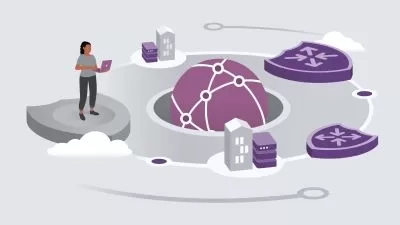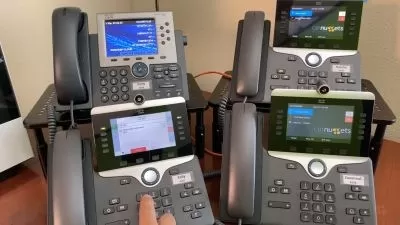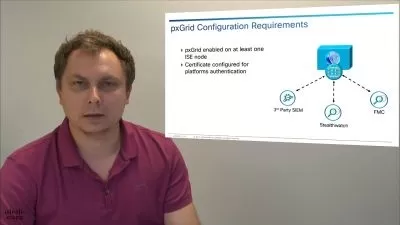Essentials of Physical Network Connectivity
Dhananjay Naldurgkar | Cybersecurity Expert
1:31:39
Description
Everything about wired and wireless connectivity in computer networking
What You'll Learn?
- Gain proficiency in the installation, termination, and testing of Ethernet and fiber optic cabling.
- Understanding cabling standards & crimping methods
- Understanding purpose of various network devices like Repeaters, switches, & routers
- Exposure to various types of network architectures & Technologies
Who is this for?
What You Need to Know?
More details
DescriptionThis course provides a comprehensive introduction to the foundational principles of physical networking. Students will learn about the hardware, cabling, and devices that form the backbone of modern networks. Through a combination of lectures, hands-on exercises, and lab work, participants will gain practical skills in designing, implementing, and troubleshooting physical network infrastructures.
Topics Covered:
Introduction to Physical Networking
Network Topologies
Network Devices and Hardware
Cabling and Connectors
Network Media (Copper, Fiber, Wireless)
Network Standards and Protocols
Network Security and Physical Security
Network Maintenance and Troubleshooting
Emerging Trends in Physical Networking
Course Objectives:
Understand the fundamental concepts of physical networking
Identify and differentiate between various network topologies
Recognize different types of network devices and their functions
Select appropriate cabling and connectors for different network environments
Explain the importance of network standards and protocols
Implement basic network security measures
Perform basic network maintenance and troubleshooting tasks
Discuss emerging trends and technologies in physical networking
Prerequisites:
Basic understanding of computer hardware and operating systems.
Course Format:
This course is delivered in a combination of lectures, hands-on labs, and practical exercises. Students will have access to networking equipment and tools to simulate real-world scenarios and gain practical experience.
Target Audience: This course is suitable for anyone interested in learning the fundamentals of physical networking, including IT professionals, network administrators, and system engineers.
Who this course is for:
- This course is designed for individuals interested in pursuing a career in network administration, network engineering, or IT infrastructure. It is also suitable for professionals seeking to enhance their knowledge and skills in physical networking.
This course provides a comprehensive introduction to the foundational principles of physical networking. Students will learn about the hardware, cabling, and devices that form the backbone of modern networks. Through a combination of lectures, hands-on exercises, and lab work, participants will gain practical skills in designing, implementing, and troubleshooting physical network infrastructures.
Topics Covered:
Introduction to Physical Networking
Network Topologies
Network Devices and Hardware
Cabling and Connectors
Network Media (Copper, Fiber, Wireless)
Network Standards and Protocols
Network Security and Physical Security
Network Maintenance and Troubleshooting
Emerging Trends in Physical Networking
Course Objectives:
Understand the fundamental concepts of physical networking
Identify and differentiate between various network topologies
Recognize different types of network devices and their functions
Select appropriate cabling and connectors for different network environments
Explain the importance of network standards and protocols
Implement basic network security measures
Perform basic network maintenance and troubleshooting tasks
Discuss emerging trends and technologies in physical networking
Prerequisites:
Basic understanding of computer hardware and operating systems.
Course Format:
This course is delivered in a combination of lectures, hands-on labs, and practical exercises. Students will have access to networking equipment and tools to simulate real-world scenarios and gain practical experience.
Target Audience: This course is suitable for anyone interested in learning the fundamentals of physical networking, including IT professionals, network administrators, and system engineers.
Who this course is for:
- This course is designed for individuals interested in pursuing a career in network administration, network engineering, or IT infrastructure. It is also suitable for professionals seeking to enhance their knowledge and skills in physical networking.
User Reviews
Rating
Dhananjay Naldurgkar | Cybersecurity Expert
Instructor's Courses
Udemy
View courses Udemy- language english
- Training sessions 9
- duration 1:31:39
- Release Date 2024/06/25








![Identity and Access Management : Forgerock OpenAM [Part 1]](https://traininghub.ir/image/course_pic/18760-x225.webp)






